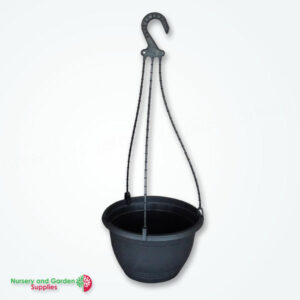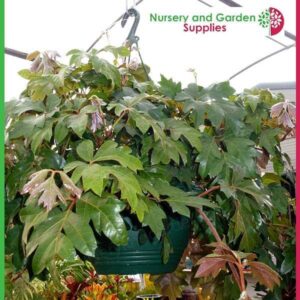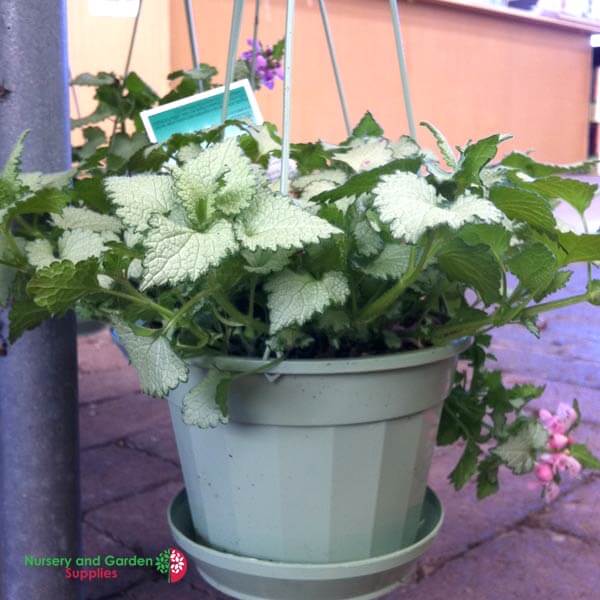Maximising small spaces can be challenging, but plastic hanging baskets are a smart and easy way to add plants to your home. These baskets let you bring greenery into areas where floor space is limited, like a small balcony, tiny garden, or compact indoor corner. By hanging plants, you can use vertical space to create a green and cozy space.
Hanging baskets are incredibly adaptable and may accommodate a variety of plants, including vibrant flowers and fresh herbs. They can liven up boring areas and make any place feel more natural and alive. This post will explain to you how to use plastic hanging baskets in innovative ways to turn even the smallest spaces into green, vibrant areas.
What Are the Benefits of Using Plastic Hanging Baskets?
Plastic hanging baskets are a popular choice for improving both indoor and outdoor spaces. They offer a range of benefits that make them a practical and attractive option for many people. Their numerous advantages make them a go-to solution for anyone looking to add plants to their home or garden.
- Durability: Perfect for outdoor use, plastic hanging baskets withstand a variety of weather conditions. They last for years since they are resistant to corrosion and decay, unlike metal or wooden baskets.
- Lightweight: One of the key advantages of hanging plastic baskets is their low weight. Because of this, hanging them is simple even in areas like indoor walls or balconies where weight may be a concern.
- Cost-Effective: Plastic hanging baskets are an excellent choice for individuals on a tight budget because they are less expensive than hanging baskets made of metal or ceramic.
- Versatility: You may choose the ideal size for your space by selecting from a range of plastic hanging baskets, ranging from small hanging pots to large hanging baskets.
- Low Maintenance: Unlike other materials, plastic requires minimal maintenance. It does not need to be treated or painted, and it’s easy to clean with just soap and water.
 How Do You Use Hanging Baskets in Small Spaces?
How Do You Use Hanging Baskets in Small Spaces?
Using hanging baskets in limited areas necessitates innovation and careful planning. Making the most of your limited space entails considering how to use every inch effectively. Here are practical recommendations to help you maximise your space and completely benefit from hanging baskets:
- Vertical gardening: Arrange hanging pots or baskets at varying heights to make the most of the vertical space available. This method works well for producing the illusion of a green wall, particularly in tiny gardens or balconies. In addition to saving room, vertical planting adds visual interest to your home.
- Mini Herb Garden: If you love cooking with fresh herbs, consider creating a mini herb garden using garden hanging baskets. Hang them near your kitchen window or on a balcony. Herbs like basil, mint, and parsley thrive in hanging baskets, and you’ll have fresh ingredients within arm’s reach.
- Utilising Corners: Corners often go unused in small spaces. Hanging a plant hanging basket in a corner can add a pop of greenery without taking up floor space. This is particularly effective indoors, where every square inch counts.
- Wall-Mounted Solutions: Combine hanging baskets with wall-mounted planters to maximize space. This is an excellent way to create a vertical garden that makes use of both hanging and wall-mounted options.
Can You Grow Vegetables in Plastic Hanging Baskets?
Yes, you can grow vegetables in plastic hanging baskets, which makes them an excellent option for urban gardening and limited spaces. These baskets offer a unique way to cultivate fresh produce even in small or unconventional areas. By using hanging baskets, you can create a productive mini-garden right outside your kitchen or on a balcony.
- Best Vegetables for Hanging Baskets: Not all vegetables are suitable for hanging baskets. Focus on smaller varieties that don’t require deep roots, such as cherry tomatoes, lettuce, spinach, and strawberries. These vegetables are perfect for small spaces and grow well in garden hanging baskets.
- Care Tips: Vegetables in hanging baskets need regular care. Ensure they get enough sunlight by placing them in a well-lit area. Watering is also crucial since hanging baskets dry out faster than ground soil. Consider using large hanging pots for vegetables, as they provide more soil volume, retaining moisture longer.
- Sunlight and Watering: Position your hanging baskets where they receive adequate sunlight, typically 6-8 hours per day. In small spaces, this might mean placing them near windows or on a balcony. Be mindful of watering needs; hanging baskets often require more frequent watering due to their elevated position.
What Are Some Creative Ideas for Decorating with Plastic Hanging Baskets?
Decorating with plastic hanging baskets is a great way to add creativity and style to your space. They let you bring in plants and personalise your area easily.
- Colour Coordination: Choose hanging baskets in colours that complement your existing decor. For example, if you have a neutral-coloured balcony, coloured hanging pots can add a vibrant contrast. Conversely, if your space is colourful, neutral-toned baskets can provide balance.
- Mixing Plant Types: Combine different plant types in your hanging baskets for a fuller and more varied appearance. For example, mix flowering plants with foliage plants to create a visually appealing arrangement. Using large hanging baskets allows for more variety, letting you combine multiple plants in one container.
- Decorative Elements: Add decorative items like beads, macramé hangers, or ribbons to your hanging baskets. These small touches can improve the overall look and make your hanging baskets stand out. Decorative macramé hangers are especially popular for indoor hanging baskets, adding a bohemian flair to your space.
- Themed Gardens: Create themed hanging baskets, such as a butterfly garden with plants that attract butterflies or a succulent garden with a variety of small succulents. Themed gardens can be a fun way to express your personality and interests through your plants.
How Can You Make the Most of Limited Space with Hanging Baskets?
Maximising limited space involves smart placement and creative use of hanging baskets. By arranging them thoughtfully, you can make the most of your small area. Here is how you can effectively use hanging baskets to fit more plants and improve your space:
- Layering Hanging Planters: Arrange hanging planters at varying heights to achieve a layered look. This approach not only enhances visual appeal but also allows you to maximise plant space in a compact area. Large hanging planters work best at the bottom, with smaller ones positioned above them for a tiered effect.
- Combining with Other Planters: Make the most of your space by mixing hanging planters with wall-mounted options. This combination is particularly effective in small outdoor areas like patios or balconies, where floor space is limited.
- Creating a Privacy Screen: Use hanging planters to create a natural privacy screen. Hang them in a row along a balcony railing or patio edge. Trailing plants like ivy are ideal for this, as they grow downward to form a lush, green curtain.
- Utilising Multi-Pot Hangers: Consider using multi-pot hangers that allow you to hang several planters vertically in a single line. This method is perfect for showcasing a variety of plants while maximising the use of available space.
What Types of Plants Thrive in Hanging Baskets?
Choosing the right plants is essential for making your hanging baskets thrive. The success of your hanging baskets depends on selecting plants that suit their environment and care requirements. Here are some recommendations to help you pick the best plants for your hanging baskets:
- Low-Maintenance Plants: Opt for plants that are easy to care for, especially if you have a busy lifestyle. Plants like spider plants, pothos, and ferns are ideal for indoor hanging baskets as they require minimal care.
- Flowering Plants: For a splash of colour, consider flowering plants like petunias, begonias, and geraniums. These plants are perfect for outdoor hanging baskets, adding vibrant colour to your small garden or balcony.
- Foliage Plants: Ivy, ferns, and trailing vines are all great options for hanging baskets. They give texture and freshness without requiring as much sunlight as flowering plants do.
- Seasonal Plants: Change up your plants according to the seasons. In the spring, choose colourful flowers; in the fall, try attractive grasses or modest evergreens. Seasonal plants keep your hanging baskets appearing fresh and current all year.

How to Maintain and Care for Plant Hanging Pots?
Proper maintenance is important for keeping your plastic hanging baskets looking good and your plants healthy. Regular care helps to avoid problems and extends the life of both the baskets and the plants.
- Cleaning and Maintenance: Regularly clean your plastic hanging baskets to prevent mould and algae buildup. Simply wipe them down with soapy water and rinse thoroughly. This is especially important for outdoor hanging baskets that are exposed to the elements.
- Ensuring Adequate Drainage: Root rot prevention requires proper drainage. To improve water flow, check that the hanging baskets have drainage holes and think about adding a layer of gravel at the bottom. You can drill holes in your baskets yourself or use them as cachepots with an inside pot that has drainage if they don’t already have drainage holes.
- Watering Tip: Make sure to water your hanging baskets regularly, but don’t overdo it. While not soggy, the earth should be damp. Use a saucer underneath indoor hanging baskets to collect any overflowing water. It may be necessary to water outside hanging baskets more frequently, particularly during hot weather.
- Fertiliser and Pruning: To maintain the health of your plants, fertilize them regularly. Every few weeks, use a balanced, water-soluble fertiliser. Maintaining your plants’ size and form also requires pruning. To keep your plants looking nice, remove any dead or yellowing leaves and cut back any overgrown branches.
Conclusion
Plastic hanging baskets are a practical solution for small spaces. They allow you to add greenery to a compact balcony, brighten up a small indoor corner, or create a vertical garden with ease. By selecting the right plants, using creative placement, and providing proper care, you can maximize your limited space and enjoy a vibrant, lush environment year-round.
Hanging pots make the most of limited space, turning small areas into lively green spots. With thoughtful arrangement and regular care, they offer benefits like improving air quality, adding colour, and improving the overall look of your space
For both seasoned gardeners and beginners, plastic hanging baskets offer an affordable way to introduce plants into small spaces.








